Are you worried that your cat may be running a fever? It’s common knowledge that, unlike humans, cats can’t tell us when they’re feeling ill. Our guide will walk you through the signs and symptoms of fever in felines, educating you on how to take their temperature and treat them appropriately.
Stay with us as we delve into this essential topic for every responsible cat owner!
Key Takeaways
- Signs of a fever in cats include lethargy, hiding, loss of appetite and thirst, shivering, rapid breathing, and changes in grooming habits.
- To take your cat’s temperature, you can use either a rectal or ear thermometer.
- Treatment for fever in cats involves medications to lower the fever, providing fluids and proper nutrition, and allowing them plenty of rest while closely monitoring their condition.
- It’s important to seek veterinary care if your cat has a fever for more than 24 hours or if their temperature is above 104 degrees Fahrenheit.
Contents
- Understanding Fever in Cats
- Symptoms of Fever in Cats
- How To Take Your Cat’s Temperature
- Treatment for Fever in Cats
- When To Seek Veterinary Care
- Recovery and Management of Fever in Cats
- Prevention Tips
- Frequently Asked Questions
- Conclusion
- FAQs
- 1. What are the signs that my cat may have a fever?
- 2. How can I check my cat’s temperature to determine if they have a fever?
- 3. When should I be concerned and seek veterinary care for my cat’s fever?
- 4. Can I give my cat over-the-counter medications to bring down their fever?
- 5. What actions should I take if my cat has a confirmed fever?
Understanding Fever in Cats
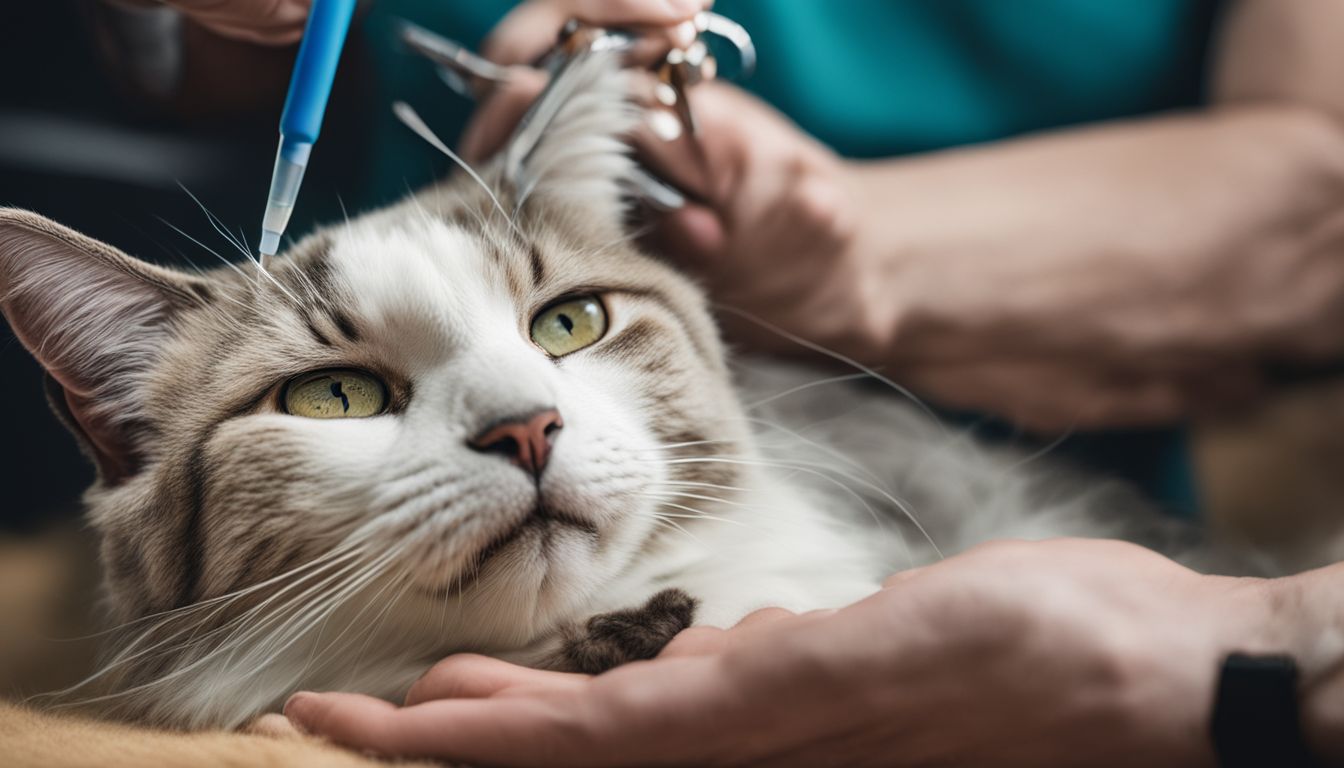
Fever in cats can be a sign of an underlying illness or infection, and it’s important for pet owners to be able to recognize the common signs and symptoms.
Causes of Fever in Cats
There are many things that can cause a fever in cats. Here are some of them:
- Infections: Bacteria, viruses, or fungi can make your cat sick.
- Heat stroke: Too much heat can harm your cat.
- Poison: Harmful substances can raise body temperature.
- Medicine: Some drugs may lead to a high fever.
- Disease: Certain diseases like cancer can cause fever.
- Wounds: Open sores and cuts could lead to infection.
- Parasites: Fleas, ticks, and worms could increase temperature.
Common Signs of Fever
Your cat may have a fever if you notice these changes:
- Your cat is not as active as normal. This state is called lethargy.
- The cat hides more than it does usually.
- You see less eating and drinking by the cat.
- Your cat shakes like it’s cold. This shivering can be a sign of fever.
- The breathing of your cat is very fast, faster than before.
- Your cat stops taking care of its fur coat like it used to do.
Symptoms of Fever in Cats
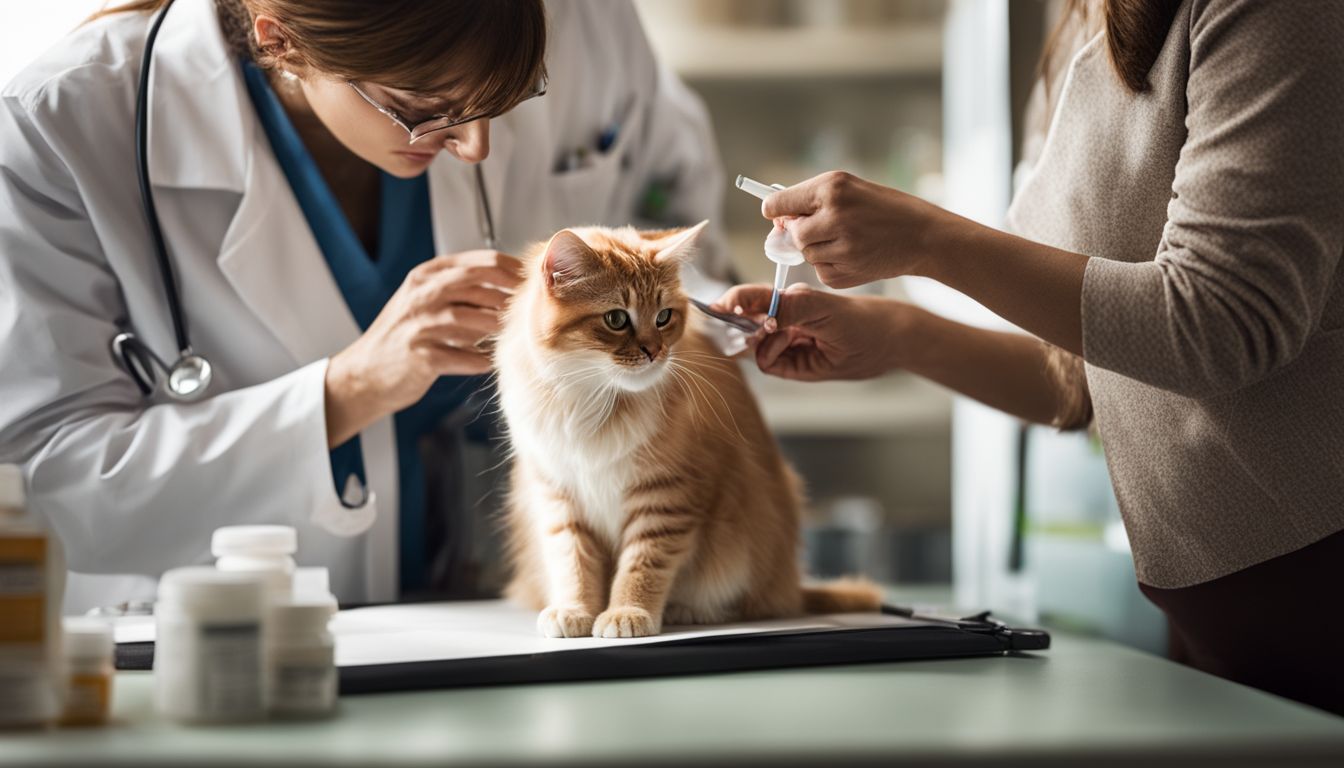
Symptoms of a Fever in Cats include lethargy, hiding, loss of appetite and thirst, shivering, rapid breathing, and a change in grooming habits.
1. Lethargy
Cats with a fever may act very tired. They may sleep more than usual or just lie around. This is called lethargy. If your cat seems to have less energy, it could be a sign of a fever.
Do not ignore this change in behavior. It is crucial to watch for any signs that your cat might not feel well.
2. Hiding
Cats may hide when they have a fever. They prefer finding quiet and secluded spots to rest, away from any disturbances. If your cat is usually social or loves attention but suddenly starts hiding, it could be a sign that something is wrong.
Pay close attention if you notice your cat hiding more often than usual, as it may indicate that they are feeling unwell and possibly running a fever.
3. Loss of Appetite and Thirst
When your cat has a fever, one of the common signs to look out for is a loss of appetite and thirst. Your cat may not show interest in their food or water bowls like they usually do.
They might only eat small amounts or refuse to eat altogether. Similarly, they may drink less water than normal or avoid it completely. It’s important to monitor their eating and drinking habits closely as dehydration can worsen their condition.
If you notice a significant decrease in your cat’s appetite and thirst, it’s essential to take action and seek veterinary care promptly.
4. Shivering
Shivering is another common sign that your cat may have a fever. Just like humans, cats may shiver or tremble when they are experiencing an elevated body temperature. This is their way of trying to regulate their own body heat.
If you notice your cat shivering and it’s accompanied by other signs of fever mentioned earlier, it’s important to monitor their condition closely and take appropriate action.
5. Rapid Breathing
Rapid breathing is another sign that your cat may have a fever. You might notice that your cat is panting or breathing faster than usual. This can be a result of their body trying to cool down and regulate their temperature.
If you observe rapid breathing along with other symptoms of a fever, it’s important to take action and seek veterinary care for your cat.
6. Change in grooming habits
Some cats may experience a change in their grooming habits when they have a fever. They might groom themselves less often or stop altogether. This is because fever can make them feel weak and unwell, causing them to lose interest in taking care of their fur.
So, if you notice that your cat’s grooming habits have changed and they are not keeping themselves clean like usual, it could be a sign that they have a fever.
How To Take Your Cat’s Temperature
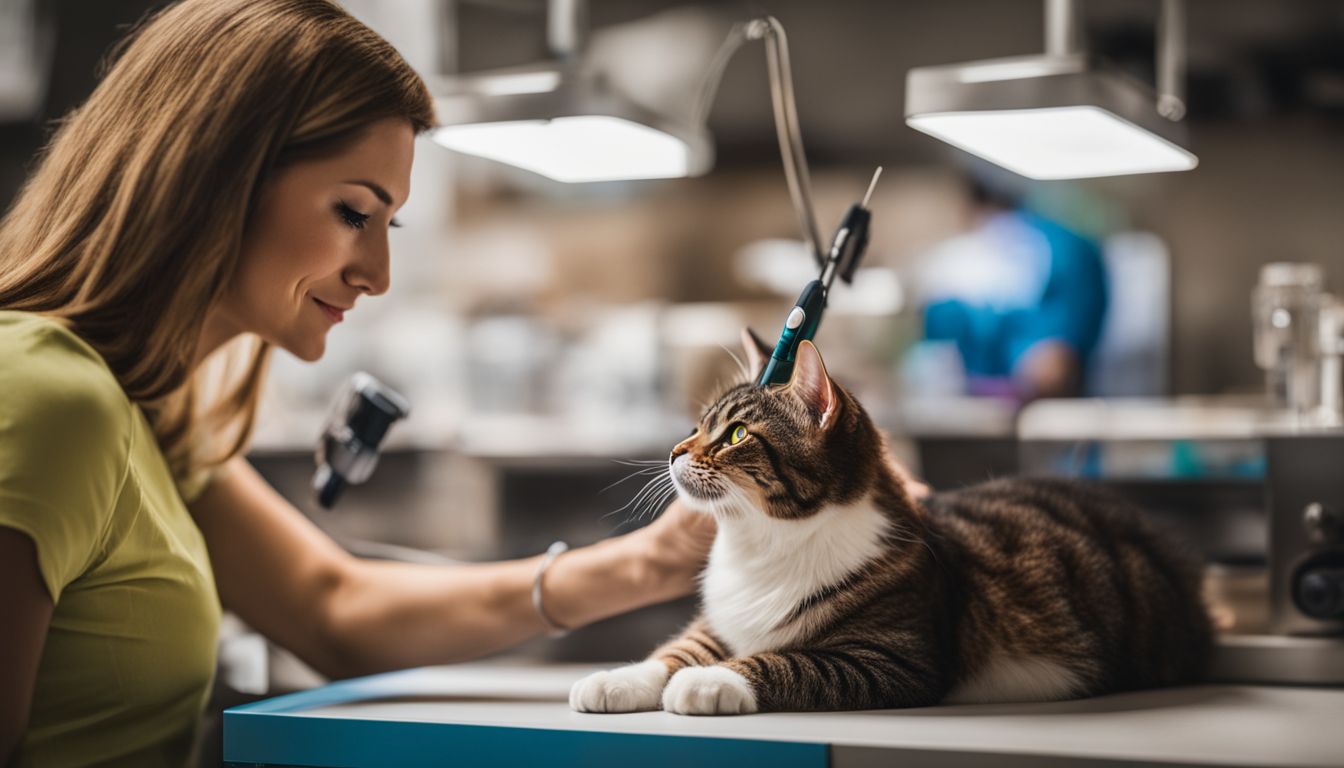
To take your cat’s temperature, you can use either a rectal thermometer or an ear thermometer.
Using a Rectal Thermometer
To take your cat’s temperature, you can use a rectal thermometer. Make sure to choose one specifically designed for pets. Gently and carefully insert the thermometer into your cat’s rectum, about half an inch to an inch deep.
Hold it there for about one minute or until it beeps if it is a digital thermometer. Remember to clean the thermometer thoroughly before and after each use using warm soapy water or rubbing alcohol.
Using an Ear Thermometer
To take your cat’s temperature using an ear thermometer, gently lift the flap of one of their ears and insert the probe into the ear canal. Press the button to start the measurement.
Make sure to hold the thermometer in place until it beeps, indicating that it has finished reading the temperature. This method is quick and convenient, but keep in mind that it may not give as accurate a reading as a rectal thermometer.
Treatment for Fever in Cats
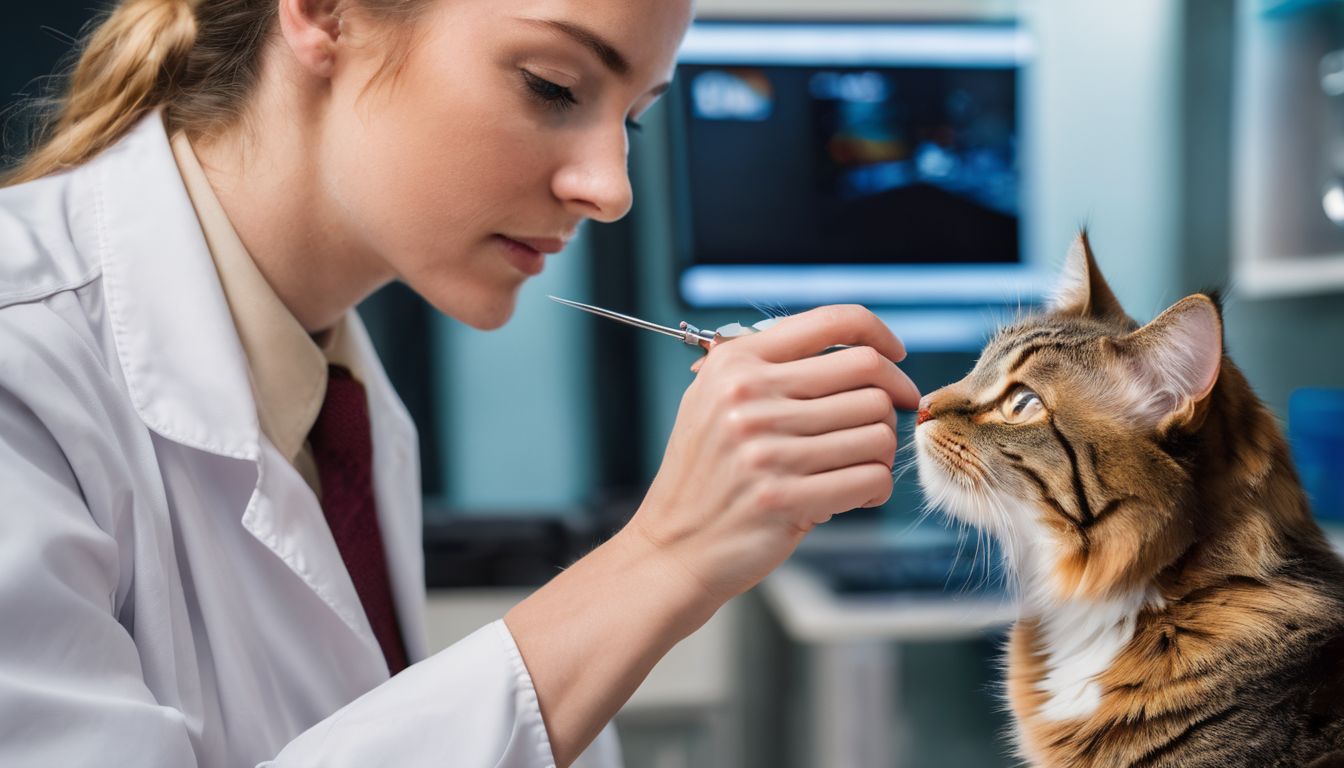
Treating a fever in cats involves providing medications to lower the fever, ensuring they receive fluids and proper nutrition, and allowing them plenty of rest while closely monitoring their condition.
Medications to lower fever
To help lower your cat’s fever, there are medications that your vet may prescribe. These medications are designed to bring down the body temperature and provide relief for your cat.
It’s important to follow the dosage instructions given by your vet and administer the medication as directed. Some common medications used to lower fever in cats include anti-inflammatory drugs and antipyretics.
These can help reduce inflammation and suppress the body’s natural response to a high temperature. Remember to consult with your vet before giving any medication to your cat, as they will be able to determine the best course of treatment based on their examination of your furry friend.
Fluids and nutrition
During a fever, cats may lose their appetite and become dehydrated. It is important to ensure that your cat stays hydrated by providing fresh water and encouraging them to drink. You can also offer wet food or warm broth to entice them to eat.
If your cat is not eating or drinking enough, it may be necessary to syringe feed them with a veterinarian-approved liquid diet. This will help maintain their strength and support their recovery from the fever.
Remember to consult with your veterinarian for specific instructions on fluid and nutrition management during your cat’s illness.
Rest and monitoring
After seeking veterinary care and starting treatment for your cat’s fever, it’s essential to provide them with plenty of rest. Make sure they have a quiet and comfortable space where they can relax.
Avoid excessive physical activity or play that could worsen their condition. Keep an eye on your cat during this time and monitor their temperature regularly to track their progress.
It’s important to follow the vet’s instructions for any medication or treatments prescribed. By giving your cat the rest they need and monitoring their temperature consistently, you can help them recover more quickly from a fever.
When To Seek Veterinary Care

If your cat has a fever for more than 24 hours or if their temperature is above 104 degrees, it is important to contact your vet for an appointment. Don’t wait, take action now to ensure the health and well-being of your furry friend.
Signs that your cat may have a fever for more than 24 hours
If your cat has a fever for more than 24 hours, there are some signs you should look out for. One sign is if your cat continues to be lethargic and lacks energy. Another sign is if your cat refuses to eat or drink water.
You may also notice that your cat is shivering or breathing rapidly. Changes in grooming habits, such as reduced grooming, can also indicate a fever lasting longer than 24 hours. If you observe these signs in your cat, it’s important to seek veterinary care as soon as possible.
Fever above 104 degrees
If your cat’s fever is above 104 degrees, it’s important to contact a veterinarian for an appointment. A high fever can indicate a serious underlying condition that requires medical attention.
The vet will be able to determine the cause of the fever and provide appropriate treatment. It’s crucial not to wait and seek prompt veterinary care when dealing with a high fever in cats.
Contacting a vet for an appointment
If you notice the signs and symptoms of fever in your cat, it’s important to contact a vet for an appointment. They can properly diagnose and treat your cat’s fever. Call your vet and explain the situation, including any changes you’ve noticed in your cat’s behavior or health.
The vet may ask you questions about their symptoms, so be prepared to provide detailed information. Based on the severity of the fever and other factors, the vet will advise you on next steps and schedule an appointment for further examination and treatment if necessary.
Remember to follow their instructions closely to ensure your cat receives the care they need.
Recovery and Management of Fever in Cats
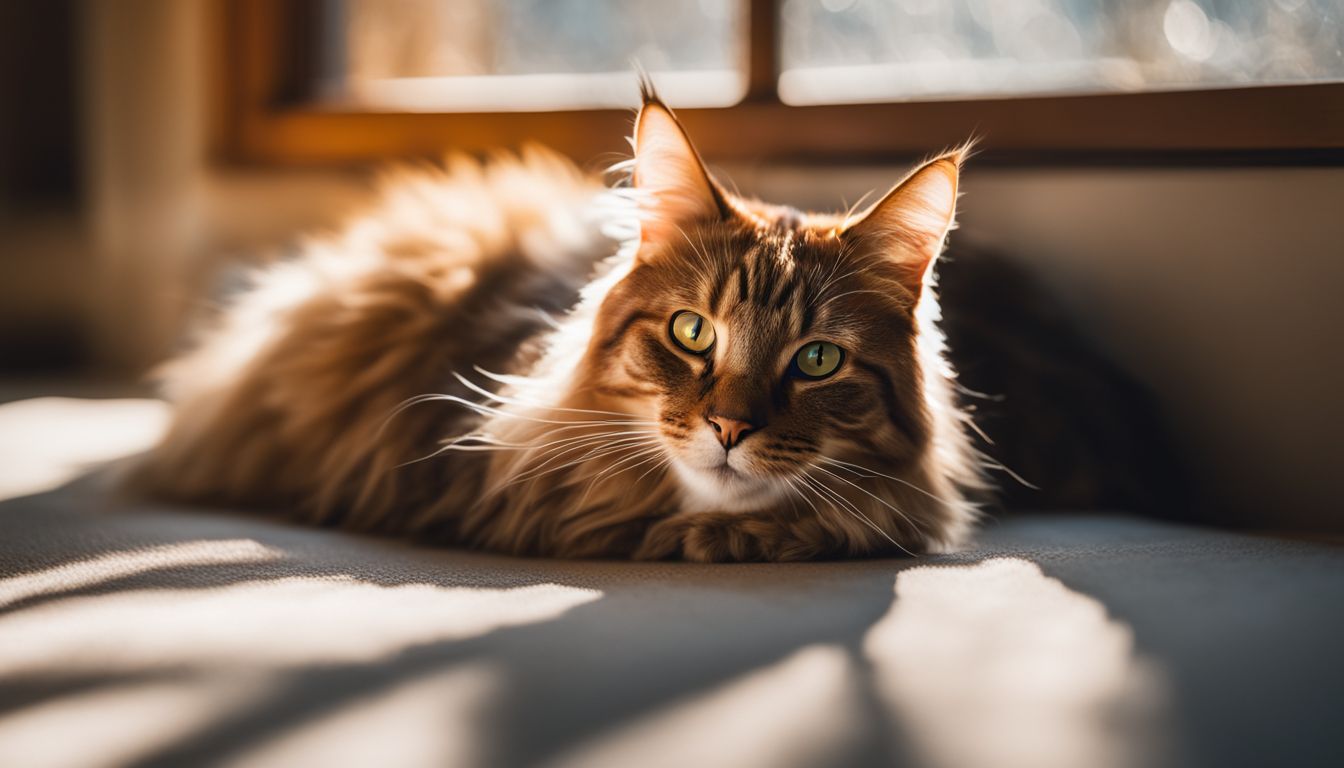
After seeking veterinary care and receiving appropriate treatment, it is important to closely monitor your cat’s temperature and overall health during their recovery. Follow your veterinarian’s instructions for medications, rest, and nutrition to ensure the best possible outcome.
Be aware of any long-term effects of the fever and continue regular check-ups to maintain your cat’s well-being.
Monitoring temperature and health
After determining that your cat has a fever, it is important to closely monitor their temperature and overall health. This will help you keep track of any changes or improvements in their condition.
You can continue to take your cat’s temperature regularly using the method recommended by your veterinarian. Additionally, pay attention to any other symptoms your cat may be experiencing, such as lethargy, loss of appetite, or dehydration.
It is crucial to provide them with plenty of water and nutrition to support their recovery. Keep an eye out for any signs that indicate the need for further veterinary care, such as a prolonged fever lasting more than 24 hours or a temperature above 104 degrees Fahrenheit.
Following vet’s instructions
After seeking veterinary care for your cat’s fever, it is important to follow the instructions provided by your vet. This may include giving medication as directed to lower the fever, providing fluids and nutrition to keep your cat hydrated and nourished, and ensuring that your cat gets plenty of rest.
It’s also essential to monitor your cat’s temperature and overall health regularly. Remember to contact your vet if you notice any worsening symptoms or if the fever persists for more than 24 hours or reaches a temperature above 104 degrees Fahrenheit.
By following the vet’s instructions closely, you can help ensure a smooth recovery for your furry friend.
Long-term effects of fever
If your cat has a fever for an extended period of time, it can have long-term effects on their health. Prolonged fever may weaken their immune system and make them more susceptible to other illnesses or infections.
It can also lead to dehydration, which can further worsen their condition. Additionally, if the underlying cause of the fever is not identified and treated properly, it may result in complications or chronic health issues for your cat.
Therefore, it is essential to seek veterinary care if your cat’s fever persists beyond 24 hours or if their temperature rises above 104 degrees Fahrenheit.
Prevention Tips

Keep your cat cool by providing a shaded area and fresh water, schedule regular veterinary check-ups, and monitor your cat’s health for any changes.
Keeping Your Cat Cool
To keep your cat cool during a fever, there are a few simple things you can do. Firstly, make sure your cat has access to fresh water at all times. This will help prevent dehydration and keep them hydrated.
You can also place a fan or air conditioning in the room where your cat spends most of their time to provide some relief from the heat. Another option is to dampen a towel with cool water and gently rub it on your cat’s fur to help lower their body temperature.
Lastly, try keeping your cat in a cool and shaded area of the house and avoid exposing them to direct sunlight or hot temperatures outside.
Regular Veterinary Check-Ups
Regular veterinary check-ups are important for maintaining your cat’s overall health and detecting any potential issues early on. During these visits, the vet will thoroughly examine your cat, checking their temperature, heart rate, and looking for any signs of illness or discomfort.
They may also ask about your cat’s behavior, appetite, and bathroom habits. These routine check-ups can help prevent future health problems by allowing the vet to identify and address any concerns before they become more serious.
It is recommended to schedule annual or bi-annual check-ups with your veterinarian to ensure that your cat stays healthy and happy.
Monitoring Your Cat’s Health
To keep your cat healthy, it’s important to monitor their health regularly. Pay attention to any changes in behavior or appearance that may indicate an underlying issue. Look out for signs like weight loss, changes in appetite or thirst, coughing, sneezing, and vomiting.
Also, keep an eye on their litter box habits and grooming routines. Regular check-ups with the veterinarian can help catch any potential problems early on. By monitoring your cat’s health closely and seeking veterinary care when needed, you can ensure they live a long and happy life.
Frequently Asked Questions
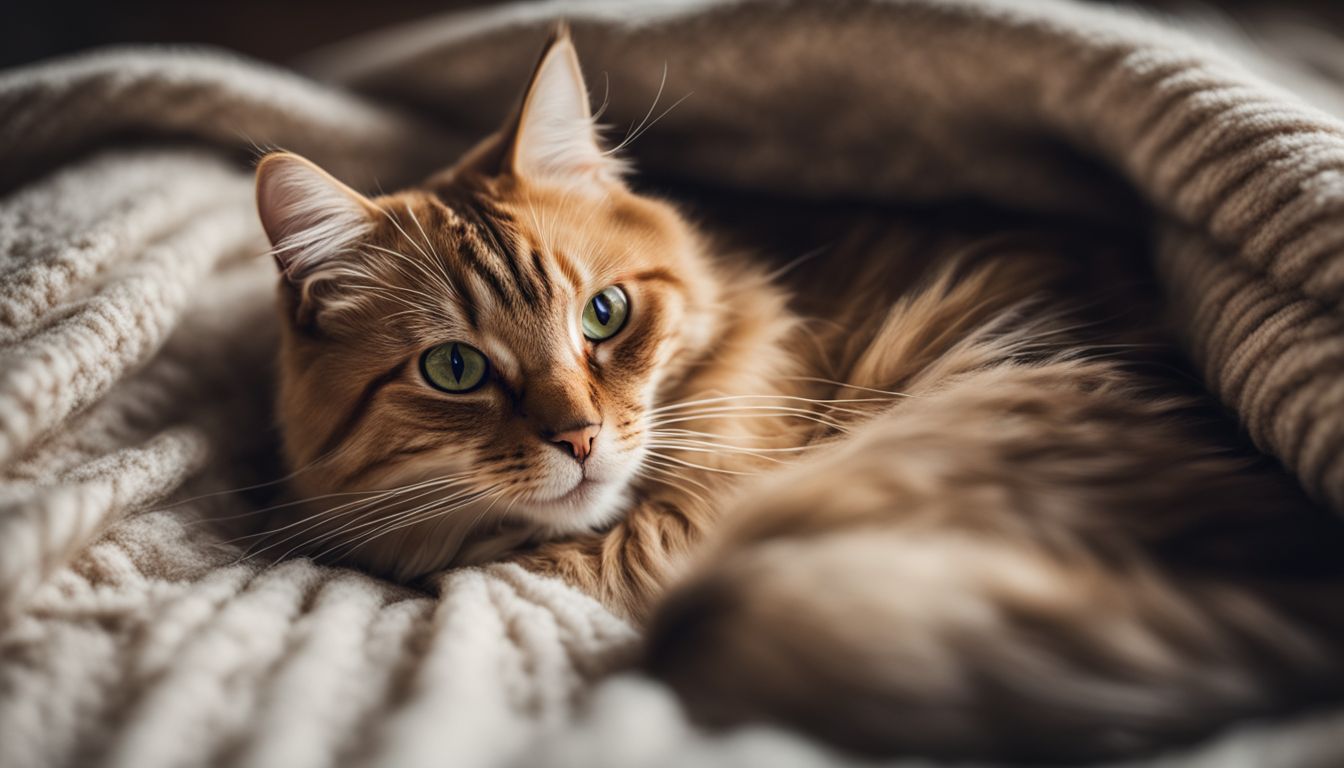
Have questions about cat fevers? Find answers to common queries and learn more about the causes, duration, treatment, and recovery from fevers in cats.
Causes of a Fever in Cats
Fever in cats can be caused by various factors. One common cause is an infection, such as a bacterial or viral infection. Other causes can include inflammation due to an injury or illness, immune system disorders, and certain medications or vaccinations.
Sometimes, more serious underlying conditions like cancer can also lead to fever in cats. It’s important to keep in mind that if your cat has a fever, it could be a sign of an underlying health issue and should be evaluated by a veterinarian to determine the exact cause and provide appropriate treatment.
Duration of Cat Fevers
Cat fevers can vary in duration depending on the underlying cause and how quickly treatment is administered. In general, a fever in cats may last anywhere from a few days to a couple of weeks.
If your cat’s fever persists for more than 24 hours or if their temperature reaches or exceeds 104 degrees Fahrenheit, it’s important to seek veterinary care. Remember to follow your vet’s instructions and monitor your cat’s temperature and overall health during their recovery period.
Recommended Actions for Cat Fevers
If you suspect that your cat has a fever, there are some recommended actions you can take. First, it’s important to monitor their temperature using a rectal thermometer or an ear thermometer designed for pets.
If their temperature is above 104 degrees Fahrenheit or if they have been showing signs of fever for more than 24 hours, it’s best to contact your veterinarian and schedule an appointment.
While waiting for the vet visit, make sure your cat has access to fresh water and encourage them to drink. You can also offer small amounts of wet food to help keep them hydrated. Avoid giving any over-the-counter medications without consulting with your vet first.
Can Parasites Cause Fevers in Cats?
Parasites, such as fleas and ticks, can sometimes cause fevers in cats. When these pesky critters bite your cat, it can lead to an allergic reaction or even transmit a disease that causes a fever.
If you notice your cat has a fever along with signs of parasite infestation, like itching or hair loss, it’s important to take them to the vet for proper diagnosis and treatment. The vet will be able to prescribe appropriate medication to get rid of the parasites and help bring down the fever.
Don’t ignore fevers in cats caused by parasites as they can lead to more serious health issues if left untreated.
Recovery from Fevers in Cats
Recovery from fevers in cats is possible with the right care. After receiving treatment from a veterinarian, it’s important to monitor your cat’s temperature and overall health at home.
Follow any instructions given by your vet, such as administering medications or providing special diets. It may take some time for your cat to fully recover, so be patient and provide plenty of rest and comfort.
Keep an eye out for any long-term effects of the fever on your cat’s health, and consult with your vet if you notice anything concerning. With proper care and attention, most cats can recover well from fevers and return to their normal energetic selves.
Will a Cat’s Fever Go Away on Its Own?
A cat’s fever may not go away on its own and it is important to seek veterinary care. Fevers in cats can be a sign of an underlying illness or infection that needs medical attention.
Monitoring your cat’s temperature and providing proper treatment is necessary for their health and well-being. If your cat has a fever that persists for more than 24 hours or if the temperature reaches above 104 degrees, contact your vet for an appointment.
They will be able to provide guidance on how to manage the fever and address any underlying issues causing it. Remember, it’s always better to be safe and consult with a professional when it comes to your cat’s health.
Conclusion

In conclusion, it’s important to pay attention to your cat’s behavior and look out for signs of fever. Keep an eye out for lethargy, hiding, loss of appetite and thirst, shivering, rapid breathing, and changes in grooming habits.
If you suspect your cat has a fever, use a rectal or ear thermometer to check their temperature. Seek veterinary care if the fever persists for more than 24 hours or if it goes above 104 degrees.
Remember to follow your vet’s instructions for treatment and recovery.
FAQs
1. What are the signs that my cat may have a fever?
Common signs that your cat may have a fever include lethargy, loss of appetite, increased thirst, warm ears or body, and shivering.
2. How can I check my cat’s temperature to determine if they have a fever?
You can use a digital rectal thermometer to gently take your cat’s temperature. Make sure to lubricate it with petroleum jelly and only insert it about half an inch into their rectum for 10-15 seconds.
3. When should I be concerned and seek veterinary care for my cat’s fever?
If your cat has a high-grade fever (over 103°F) or is showing severe symptoms such as difficulty breathing or seizures, it is important to seek immediate veterinary care.
4. Can I give my cat over-the-counter medications to bring down their fever?
No, you should never give your cat human medications without consulting a veterinarian first. Some medications can be toxic to cats, so always consult with a professional before administering any medication.
5. What actions should I take if my cat has a confirmed fever?
If your vet confirms that your cat has a fever, follow their guidance on treatment which may include providing plenty of fresh water and ensuring they rest in a comfortable environment. It’s best to let the professionals guide you on how to proceed further in treating the underlying cause of the fever.

